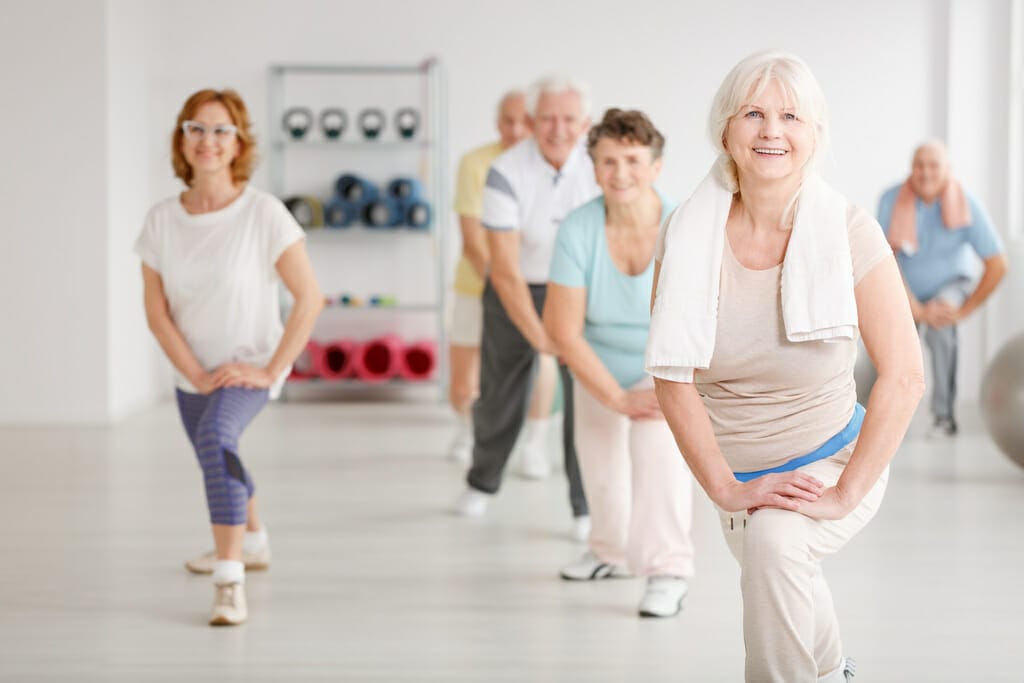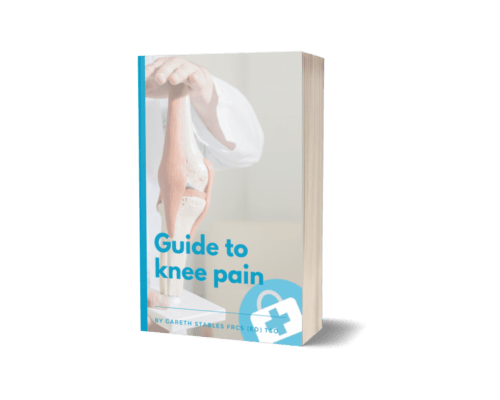5 things you can do to help manage your knee arthritis
5 Things You can do to Help Manage Your Knee Arthritis
Re-think your assumptions about knee arthritis… you’re not wearing your knee joint out by exercising. Walking or playing tennis, as long as the pain is mild, is not going to accelerate the decline of your knee. Actually the opposite is true! The stronger your legs are, the more flexible you are, the more active you are; the longer you will before need to consider surgery.
Have a look at some of my previous blogs I’ve written for you around exercise and knee arthritis.
Exercise and Osteoarthritis – Why it works
Thigh Strength and Knee Osteoarthritis
Use it or lose it
Common descriptions like wear and tear, bone on bone,cheese being grated or sandpaper on wood just aren’t accurate or helpful. You are not wearing away your knee by walking, stretching, weight training, or exercising. If your pain level is a 3-4 or lower, you should probably keep going.

- Don’t focus on the X-ray: This is really important. X-rays don’t tell the whole picture. I know people with terrible looking X-rays who are running marathons. I also know people with severe pain and very minor changes on their x-ray. We don’t treat X-rays; we treat people.
Do not consider surgery on your knee based wholly on the way your X-ray looks.
Don’t stop your activities simply because of how your X-ray looks.
Your treatment should be aimed at relieving your symptoms. Together with your specialist you should look at your symptoms, your examination, and your X-rays together. Your X-rays alone are only a small part of what will contribute to my recommendations if I see you in my clinic.
- Exercise: Exercise is not going to cause your knee arthritis to worsen. It may cause discomfort, especially for the first few weeks of a new exercise program– but that does not mean you are causing harm to your knee. The more flexible your knee joint is, the stronger the muscles are that support the knee joint, the better your quality of life will be. Whilst activities such as walking are good you need to consider doing a bit more aerobic exercise, strength training and balance training.
Aerobic exercise – activity that gets your heart rate up. The best aerobic exercise is the one that you enjoy doing. Some great examples of aerobic exercises are walking, jogging, riding a bicycle, using a rowing machine, treadmill, elliptical trainer, etc.

Strength training – basically pushing or pulling something heavy. You can complete an exercise program with only your bodyweight. You do not have to spend money on a gym membership.
You will not make your arthritis worse by exercising. Of course, exercise involves a small risk of injury, but that risk is lower than the risks to your overall health and well-being caused by not exercising.
Balance training - As with our muscle mass, our balancing abilities start to diminish as we age. Our ability to balance will contribute significantly to our chance of living a longer, healthier life– free from injuries sustained as a result of falling. Balance training also improves the sense of joint stability. Our walking becomes more confident, our fear of falling diminishes, and our risk of falling diminishes.
I can provide you with some sample exercises to help with knee osteoarthritis, if you’d like to learn more click here.
- Anti-inflammatory medication: Drugs such as ibuprofen and naproxen have a role in managing the pain and swelling associated with osteoarthritis. Preferably you should not have to take them every day. People with asthma, hypertension, kidney disease, ulcers, heart disease, and people taking “blood thinners” should consider taking paracetamol instead. These drugs will not stop arthritis from worsening. So you should only take them if the pain and swelling is bad enough. Anti-inflammatories can cause ulcers, as well as kidney disease.
- Knee injections - When simple pain-killers don’t relieve your knee pain, but you’re not at the point when you want to consider surgery, Knee Injections can help. These simple but effective treatments can be carried out in our knee clinic.

Cortisone injections - A small amount of a high dose steroid is injected into your knee under local anaesthetic. It can provide months of pain relief and allow patients to gain control over their symptoms. In some cases, patients can regain a good level of function in their knee. A corticosteroid (cortisone) injection is one of the most common anti-inflammatory injections used.
Ostenil Plus injections - The body’s natural joint lubricant, the synovial fluid, also helps spread the load throughout the joint and helps nourish the joint surfaces.
Sodium Hyaluronate (Ostenil plus) is one of the most important components in your synovial fluid. In conditions such as osteoarthritis, the balance between new and old sodium hyaluronate is disrupted and less new sodium hyaluronate is produced by your knee. As a result of this, your synovial fluid becomes more watery and stops working properly.
An injection of Ostenil plus can restore the balance of new and old sodium hyaluronate in your knee. This can mean less pain and stiffness and an overall improvement in function and movement. This can also alleviate the symptoms of arthritis and some patients report months of pain relief.
PRP injections - Platelets are cells found in your blood stream. They produce a substance that can help the body heal damaged tissues called a growth factor. PDGF or Platelet Derived Growth Factor causes a stem cell to be released and migrate to the site of injury. It is possible to separate out the platelets from a patient’s blood and inject the growth factors directly into the damaged area. Here they can help the body’s natural healing process.
When should I have a knee replacement?
Good question!! The most important person in the clinic room who decides when you should have a knee replacement is you. Knee replacement surgery is predominantly a quality of life procedure. Only you can decide if your quality of life is affected enough that you are willing to accept the significant risks associated with joint replacement surgery. If a surgeon tells you to have knee replacement surgery simply because you have bone on bone changes on your X-rays, then you should look for another surgeon!
About the author:
Mr. Gareth Stables MB ChB, FRCS (Ed) T&O
Cheshire Orthopaedic surgeon, Mr Gareth Stables, is a fully UK trained Consultant Orthopaedic Surgeon specialising in knee surgery. Gareth has the highest qualifications possible for an orthopaedic surgeon in the UK, FRCS (T&O), and is on the GMC specialist register for Trauma and Orthopaedic surgery.
Gareth specialises in; keyhole or knee arthroscopy surgery, ligament reconstruction surgery, knee osteotomy and knee replacement surgery.


